PRESENTATION: Jim Dine-The Sixties
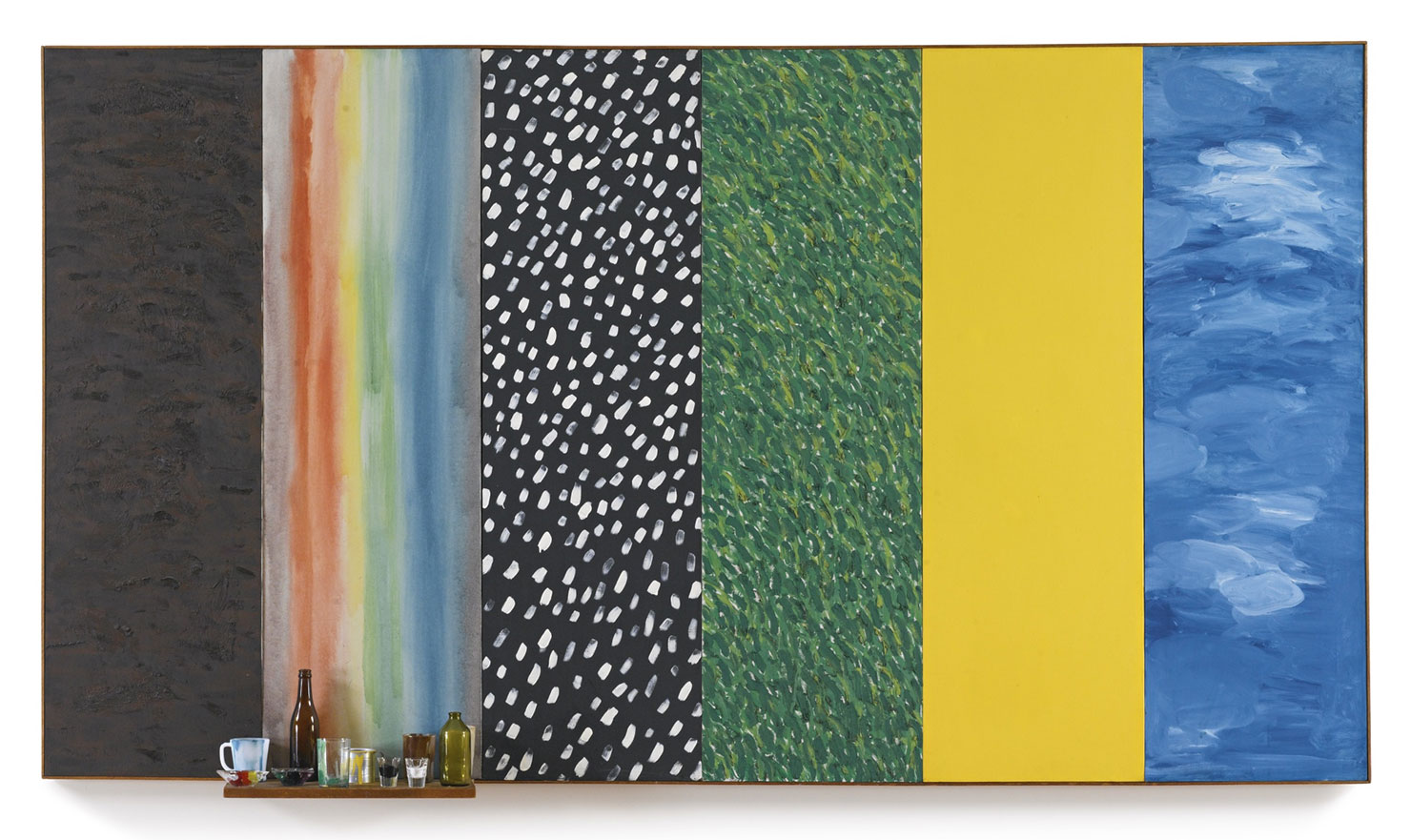 Jim Dine rose to prominence in late-1950’s New York. He played a key role in creating the first “Happenings” and thereafter was closely associated with the Pop Art movement. His diverse body of work defies such easy categorization, however, as it is also understood as seminal to Neo-Dada and Neo-Expressionism. An innovator throughout his long career, Dine’s vast and varied output includes paintings, assemblages, sculptures, drawings, prints, and over twelve books of poetry.
Jim Dine rose to prominence in late-1950’s New York. He played a key role in creating the first “Happenings” and thereafter was closely associated with the Pop Art movement. His diverse body of work defies such easy categorization, however, as it is also understood as seminal to Neo-Dada and Neo-Expressionism. An innovator throughout his long career, Dine’s vast and varied output includes paintings, assemblages, sculptures, drawings, prints, and over twelve books of poetry.
By Efi Michalarou
Photo: 125 Newbury Archive
The exhibition “The Sixties” assembles more than a dozen paintings, sculptures, and works on paper by Jim Dine, a major figure in New York’s postwar avant-garde. In the late 1950s and early 1960s, Dine was central to the city’s Happenings movement and to the emergence of Pop. This selection of early works (dating from 1959 to 1973) reflects Dine’s exploration of the poetic force of everyday things. The show grows from the longtime friendship between the artist and Arne Glimcher, who presented numerous exhibitions of Dine’s work at Pace Gallery beginning in 1976. Celebrating the eclecticism and adventurousness of the artist’s early experimentations, the exhibition traces key themes in the arc of his development over a 15-year period. The exhibition begins with Dine’s seminal painting “Car Crash” (1959-60), which shares a title with the Happening that he produced in 1960 at the Reuben Gallery in New York. A tenebrous, heavily worked surface of black pigment on burlap radiates with somber intensity, memorializing two car accidents the artist experienced in quick succession during the summer of 1959—pivotal and traumatic events that would shadow his work during this period. The shape of a crudely scrawled cross, which would become a motif in Dine’s iconography, repeats across the painting’s surface. Halfway between gesture and symbol, the cross recurs in other works from this series, suggesting at once a roadside memorial and a universal symbol of succor. This sense of duality cuts across the works in the exhibition. The daily accoutrement of the artist’s studio as well as mementos of Dine’s childhood spent between the aisles of his grandfather’s hardware store (hammers, boots, palettes, color charts etc.) exude a sense of transfiguration. Often blurring the lines between painting and sculpture, Dine’s depictions of these ordinary implements marry illusion and reality. In Dine’s paintings, expressionist intensity collides with deadpan literalism. In “The Studio (Landscape Painting)” (1963), Dine meditates on the nature of representation, juxtaposing a literal “still life” of found objects with a pictorial montage of abstract expressionist idioms, offering wry commentary on the history of medium and its relationship to lived reality. Things in “Their Natural Setting (First Version)” (1973), made a decade later, conveys an equally arch sensibility. An all-over field of abstract and gestural brushwork in shades of green becomes a “support” for real tools (screwdrivers, a mallet, a brush, a trowel) which are physically affixed to the painting’s surface by wires and dangle freely off the bottom of the canvas. The lighthearted yet dead-serious play between truth and illusion, objecthood and materiality embody tensions that exist at the heart of the artist’s practice. For Dine, making is an act of transfiguration. Virtuosic sculptures depicting hard industrial objects miraculously take on the suppleness of flesh, while the soft contours of the fabric neckties in the artist’s paintings somehow assume statue-like solidity. An old leather boot resting on its side on a velvet cushion has the alluring corpulence of a reclining Venus. Neckties flash with menacingly metallic edges. A pair of upright hammers are elongated in a suggestively organic poise, forming an architecture of ingress or retreat. Elsewhere, the outlines of painters’ palettes become windows into a landscape littered with car mirrors and electric fans, reflectors, and conductors. Throughout the works in the exhibition, Dine infiltrates and disrupts the ordinary flow of things. With the confidence of a latter-day Old Master, he orchestrates a sense of subtle crescendo, celebrating the triumph of nature through the glories of facture. His painterly and sculptural investments are rooted in his early experimentations in performance and poetry. Much like fellow artists of the period, including Claes Oldenburg, Lucas Samaras, and Robert Whitman—Dine’s co-conspirators in the Happenings—he embraced Dadaist sensibilities and pushed them to their most radical conclusions. As the paintings and sculptures in this exhibition attest, Dine’s work from this period helped fundamentally reshape the contours of what art could be.
Photo: Jim Dine, The Studio (Landscape Painting), 1963, Oil on canvas with wooden shelf and painted glass, 60 x108 1/2 x 10 in. (152.4 x 275.6 x 25.4 cm), © Jim Dine, Courtesy the artist and 125 Newbury
Info: 125 Newbury, 395 Broadway, New York, NY, USA, Duration: 15/3-20/4/2024, Days & Hours: Tue-Sat 10:00-18:00, www.125newbury.com/
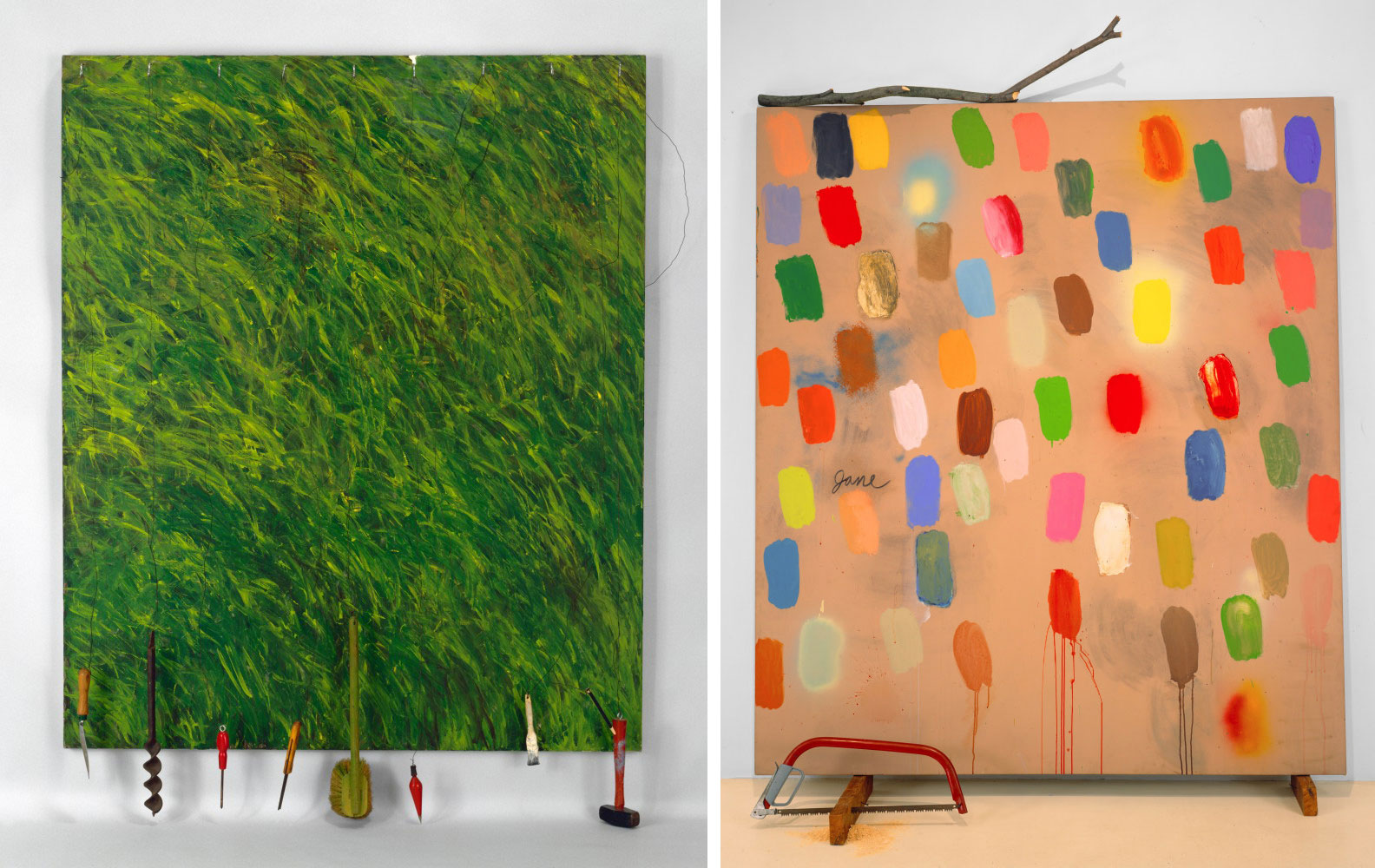
Right: Jim Dine, Jane, 1969, acrylic on canvas with objects, 8′ 8″ x 78″ (264.2 x 198.1 cm), © Jim Dine, Courtesy the artist and 125 Newbury
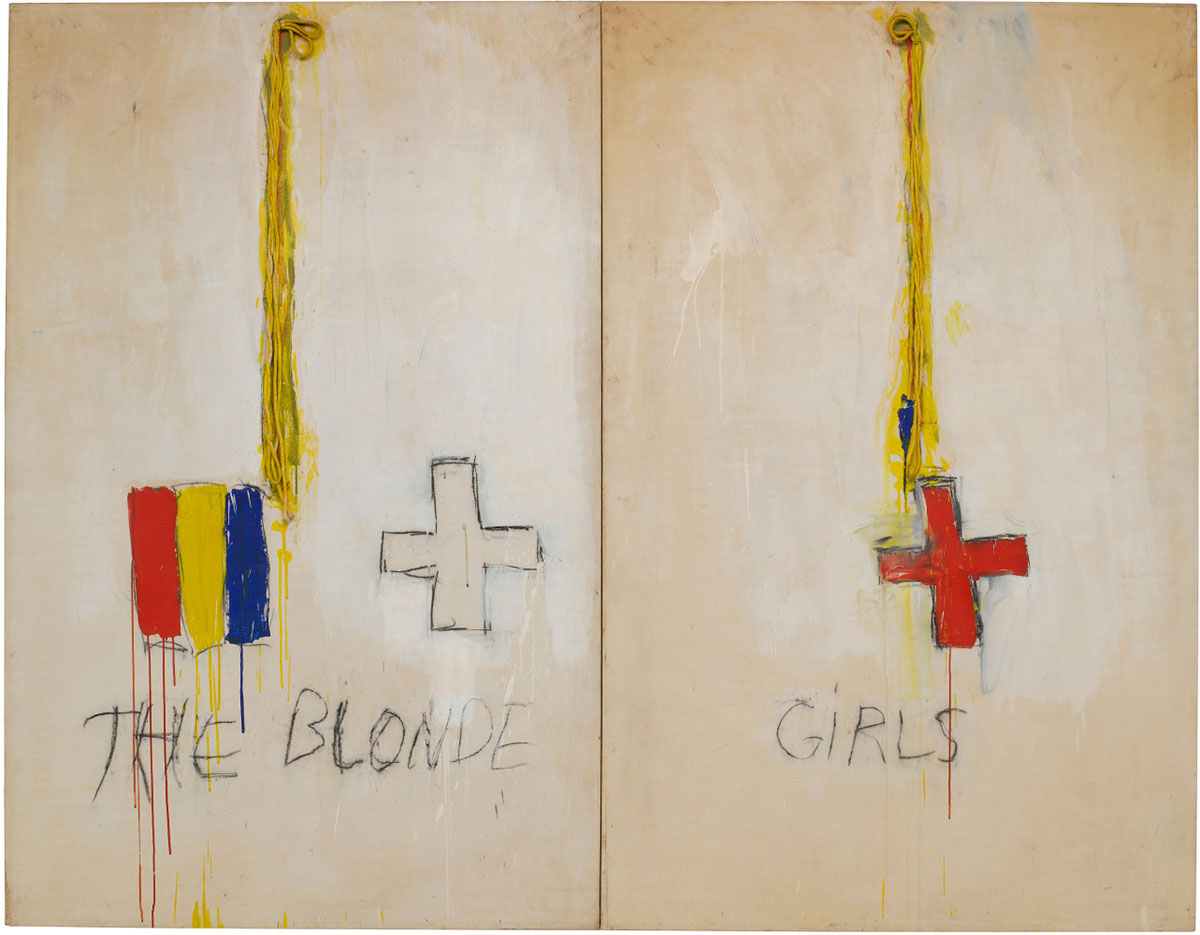
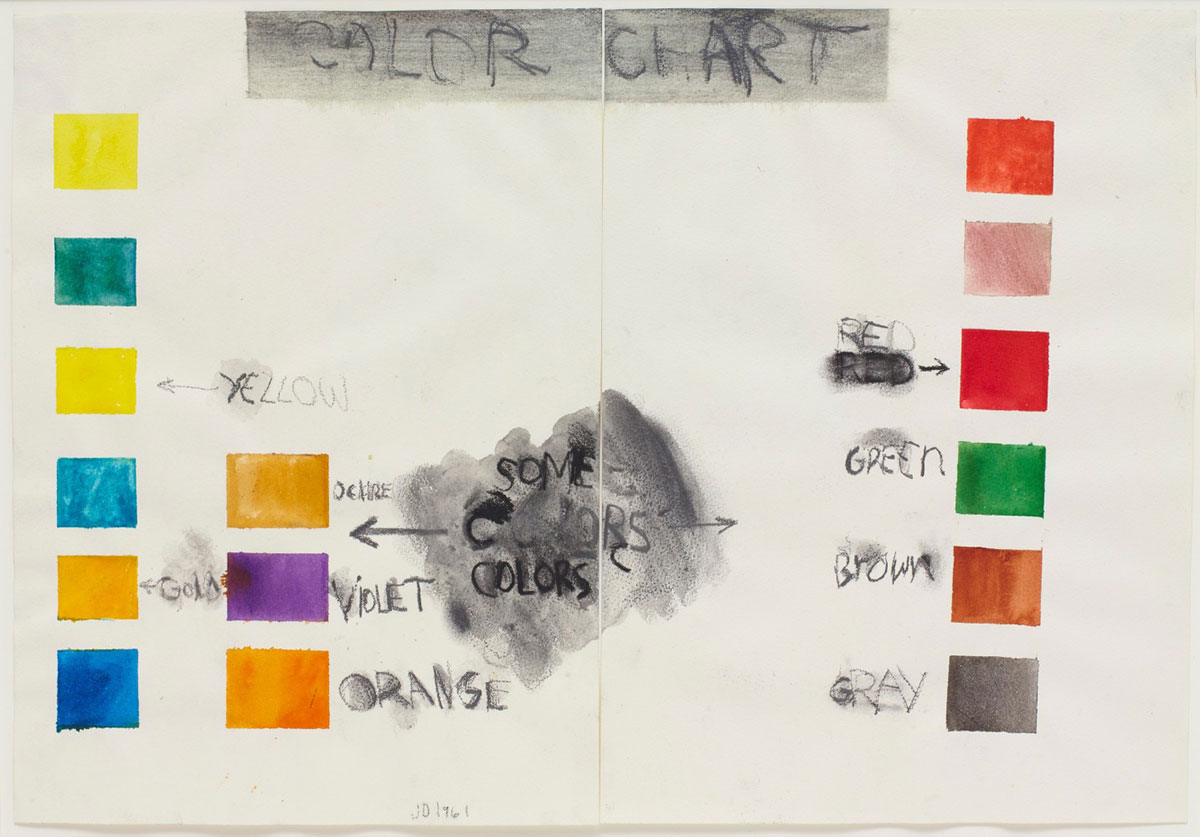
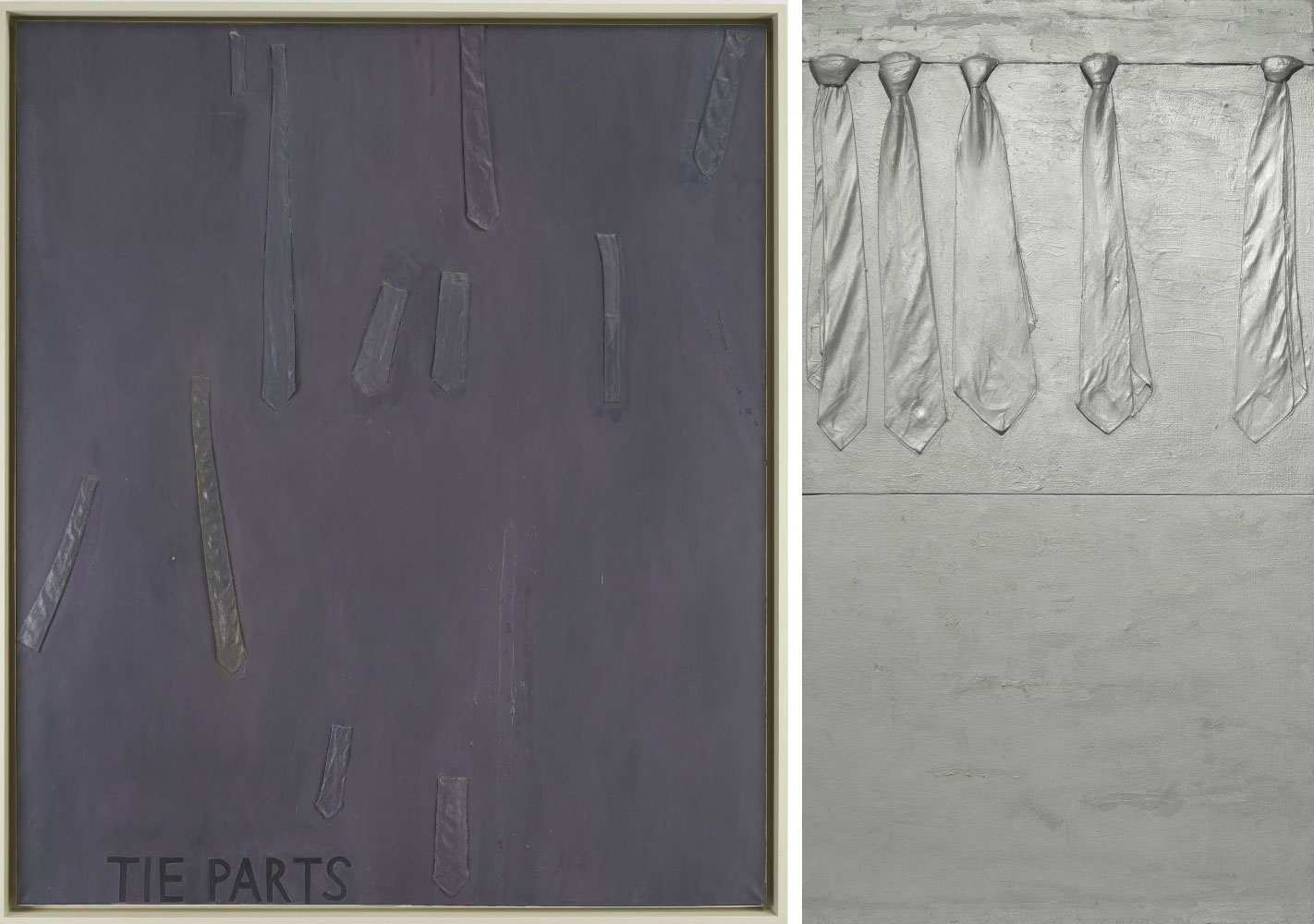
Right: Jim Dine, Five Silver Ties, 1962, oil, aluminum paint and neckties on canvas, 43-1/2″ x 24″ (110.5 cm x 61 cm) , © Jim Dine, Courtesy the artist and 125 Newbury
